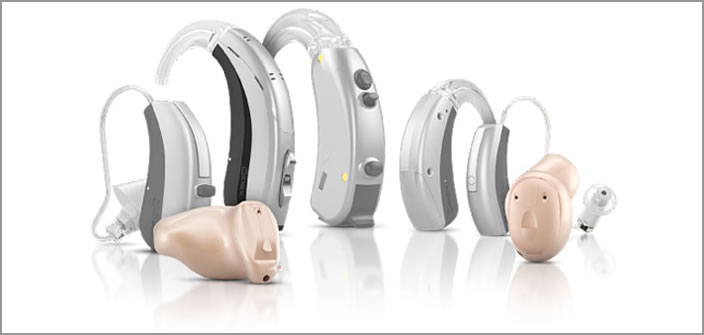Hearing Aids
Hearing Aids
The inner ear is extremely delicate and is under constant strain from our daily activities. The nerve damage that results is called sensorineural hearing loss. Everything from loud noise, ageing, drugs, and other toxins can all harm our hearing resulting in hearing loss, which can only be corrected with a hearing aid.
As independent audiology and hearing aid specialists McCreesh Hearing are authorised providers of the latest digital technology from leading manufactures:
Each manufacturer has its own range of products, which can be divided in to different levels of technology and styles. At McCreesh Hearing, we have extensive experience in the prescription and fitting of hearing aids; matching the appropriate level of technology, with the most appropriate manufacturer and cosmetically appealing style, to suit your individual requirements and hearing needs.
Which Hearing Aid Is Right for Me?
Which Hearing Aid Is Right for Me?
 Your hearing is unique. No one else hears the same way that you do. As a result, there isn’t a one fix all hearing aid that works for everyone with hearing loss. That’s why it is important to obtain honest impartial advice.
Your hearing is unique. No one else hears the same way that you do. As a result, there isn’t a one fix all hearing aid that works for everyone with hearing loss. That’s why it is important to obtain honest impartial advice.
At McCreesh Hearing we believe the best hearing device for you, will be the one that corrects your hearing, is comfortable to wear, with the capacity to vastly improve your lifestyle, whilst staying within your budget. We will advise you on a hearing aid to suit your individual requirements and hearing needs, and not simply because it is the most expensive.
Today’s digital hearing aids are small and discreet, working and looking better than ever before. The digital technology continuously assesses your environment and adjusts automatically to select speech frequencies over background ‘noise’. Despite the high levels of technology contained within, modern digital hearing aids are very user friendly and much easier to operate than earlier models.
What Do Hearing Aids Look Like?
What Do Hearing Aids Look Like?
Due to technological advancements, today’s digital hearing aids are small and discreet, fitting neatly and unobtrusively in or behind the ear:
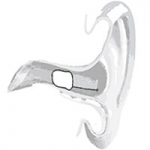 Invisible in Canal (IIC).
Invisible in Canal (IIC).
The IIC is the smallest model in hearing aids and it is especially suitable if you have a mild to moderately severe hearing loss. It has a custom made shell and all vital electronics are placed individually in the shell, providing an optimum and small fit. The IIC is small enough to be placed very deep inside the ear canal, making it virtually invisible. Its placement furthermore allows users to still benefit from the natural shape of the ear for better localisation of sounds. An IIC therefore also has a big aesthetic advantage: No one can actually see that you are wearing a hearing aid. For easy everyday removal, the IIC has a small extension cord attached to the outside. The IIC model works fully automatically.
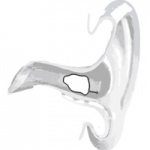
Completely in Canal (CIC)
The CIC is one of the smallest hearing aid models and is especially suitable if you have a mild to moderate hearing loss. It is a custom made shell that contains all the electronic components. The shell is placed deeply in the ear canal, making the hearing aid almost invisible. A CIC therefore has a big aesthetic advantage: No one can actually see that you are wearing a hearing aid. For easy everyday removal, the CIC has a small extension cord attached to the outside. A CIC model works fully automatically.
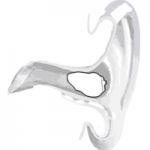 In-the-ear model (ITE)
In-the-ear model (ITE)
An in-the-ear model (ITE) is suitable if you have a mild to severe hearing loss. The ITE has all its electronic components contained within a plastic shell moulded to fit your ear. The ITE model is placed in the ear canal, but with the faceplate still visible in the concha of your ear.
The size – as well as the visibility – of the ITE depends on your degree of hearing loss and the shape of your ear canals.
The ITE comes with optional user controls for program and volume change on the outside shell plate.
Receiver in Canal (RIC).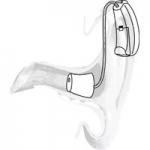
The receiver-in-canal (RIC) model is a newer development in hearing aids and is suitable for mild to severe hearing loss. Compared to a classic behind-the-ear (BTE) hearing aid, the receiver of the RIC (the loudspeaker) is placed in the ear-tip instead of in the housing, thereby reducing its size. The RIC model consists of three parts: The housing, which sits behind the ear, and a thin earwire connecting the housing to the receiver. The receiver goes directly into the ear canal. The RIC model is a very discreet, yet powerful hearing aid, which works fully automatically. Note that the RIC model is quite similar to the RITE model. The difference is the placement of the receiver in the ear.
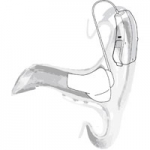 Receiver-In-The-Ear (RITE).
Receiver-In-The-Ear (RITE).
The receiver-in-the-ear (RITE) model is a newer development in hearing aids and is suitable for mild to severe hearing loss.
Compared to a classic behind-the-ear (BTE) hearing aid, the receiver of the RITE (the loudspeaker) is placed in the ear-tip instead of in the housing, thereby reducing its size.The RITE model consists of three parts: The housing, which sits behind the ear, and a thin earwire connecting the housing to the receiver. The receiver is placed in the concha of the ear.
The RITE model is a very discreet, and yet powerful hearing aid, which works fully automatically.
Note that the RITE model is quite similar to the RIC model. The difference is the placement of the receiver in the ear.
Behind-the-ear hearing aids (BTE)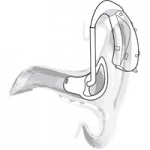
The classic behind-the-ear model (BTE) is the choice if you have a severe hearing loss or if you have very small ear canals, which makes it difficult to fit an entire hearing aid into your ear. All the electronic components of a classic BTE model are located in a housing placed behind your ear. A slim plastic tube with an earmould in the end directs the amplified sound from the hearing aid into your ear. Manual controls for volume and program change are placed on the top side of the hearing aid for easy user access.
Depending on the model, BTE hearing aids can moreover often be fitted with an open fit solution. This means that the ear-tip is made with compensatory measures so as to optimise the sound processing.


